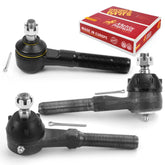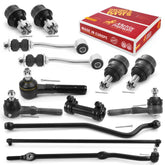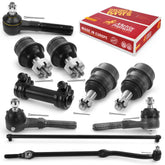A Guide to DIY Bushing Replacement: When and How to Do It Safely
Suspension bushings play a crucial role in the proper functioning of the suspension system by providing cushioning and flexibility between various parts. Typically made of rubber or other elastomeric materials, these components offer numerous benefits including vibration and noise dampening, isolation, reduced friction, flexibility, and cushioning.
It is crucial to keep an eye out for signs that may indicate the need for suspension bushing replacement. Factors such as the material, driving and environmental conditions, and vehicle usage can affect their lifespan. Be on the lookout for signs such as poor handling and stability, uneven tire wear, increased road noise, vibration, harshness, and visible damage. Changes in suspension performance, suspension noise, age, and mileage are also factors to consider when assessing the condition of your suspension bushings. When any of these signs are present, it is recommended to replace the suspension bushings promptly.
Step-by-Step Guide How to Replace Bushing Safely:
- Safety First:
Ensure that your vehicle is parked on a flat, stable surface, and engage the parking brake. Wear appropriate safety gear, including safety glasses and gloves.
- Lift the Vehicle:
Use a jack to lift the vehicle off the ground and secure it with jack stands or on a vehicle lift. Make sure the vehicle is stable before working underneath it.
- Access the Bushings:
Depending on the specific bushings you're replacing, you may need to remove other components to access them. This could include removing wheels, control arms, or other suspension components.
- Remove the Old Bushings:
If the bushing is attached to a control arm or another component, you may need to disconnect it using appropriate tools such as wrenches and sockets. Some bushings might be pressed into the suspension component. You'll need a bushing removal tool or press to carefully remove them.
- Install the New Bushings:
Apply a lubricant to the new bushings to aid in installation. Carefully press the new bushings into the designated positions. Use a bushing installation tool or press to ensure they are seated properly.
- Reassemble Components:
Reattach any components you removed to access the bushings, such as control arms. Tighten all bolts and nuts to the manufacturer's recommended torque specifications.
- Lower the Vehicle:
Carefully lower the vehicle from the jack stands or lift.
- Check and Test:
Before driving, visually inspect the newly installed bushings to ensure they are properly seated and secured. Take the vehicle for a test drive to assess the handling, stability, and any unusual noises.
- Alignment Check:
Depending on which bushings you replaced, you may need to get a wheel alignment to ensure that the suspension components are properly aligned.
It is imperative to note that the process of installing suspension bushings can vary based on your vehicle's specific design. To ensure the safety and optimal performance of your car, it is highly recommended that you consult your vehicle's repair manual or seek guidance from a professional mechanic. Failure to install bushings correctly could lead to serious safety issues and negatively impact your vehicle's handling and performance. Therefore, it is crucial to use the correct aftermarket part that meets your car's specifications. Fortunately, Metrix Premium Chassis Parts provides an easy and efficient way of finding the best part for your vehicle at https://metrixpremiumparts.com/. Be sure to take the necessary measures to guarantee the safety and reliability of your car's suspension system.









